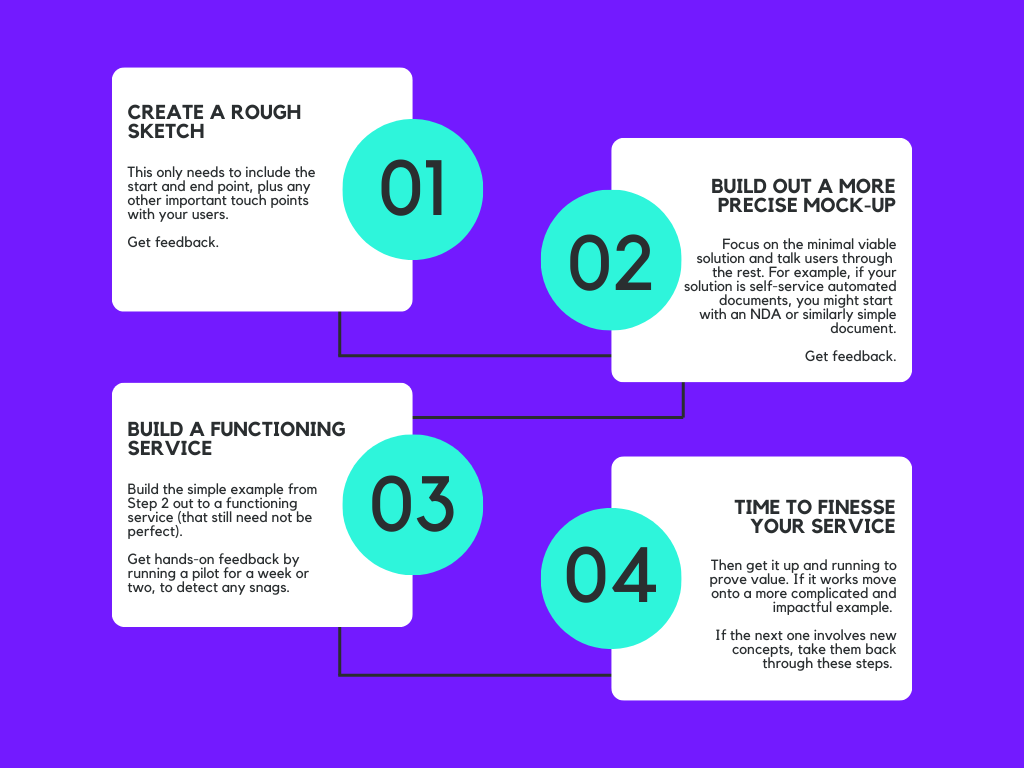Is your project doomed to fail?
According to McKinsey, 70% of change programmes don’t achieve their stated goals. And one of the most likely reasons for failure is employee engagement.
While these statistics are focused on large-scale change programmes, the same is equally true for smaller improvements implemented in legal teams.
What the final users of your change think is the most important consideration when deciding on which opportunity for change to tackle. Getting their buy-in is crucial, whether you’re looking at a new tool for your team to use or implementing a change that directly affects your team’s internal clients.
Fail to do this and it will be clearly seen in your return on investment.
It’s easy to over promise on this figure. It may be realistic to achieve your planned cost savings or other metric if all goes to plan. But ultimately, if few people adopt it, your return on investment will be negative. The impact of can be demonstrated with some simple numbers:
| Business plan | Actual | |
|---|---|---|
| Benefit | £200,000 |
£50,000 (£200,000 * 25% adoption) |
| Cost | -£100,000 | -£100,000 |
| Return | £100,000 | -£50,000 |
| ROI (Return / Cost * 100) | 100% | -50% |
How to not fail
1. Make sure it benefits users too
The single best way to get buy in is to show the future users that your change will make their lives easier.
Look for a feature of your solution that could serve as a “hook” to get your users interested. Even if it means widening the scope of your project and spending a bit more, it could be worth it for a better bet on your ROI.
For example, if you are a sales-based organisation that wants to reduce the number of minor legal requests from sales teams, you might put together a “self-service playbook”.
You could absolutely do that as a word document – but if you were in their shoes, they’d probably just rather email you and offload the problem. To not do so will require either a stone wall on your side, or some willpower on theirs.
However, if they are currently manually cobbling together their work orders and amendments to agreements, could you build your playbook into some document automation which will make them want to use it rather than feeling obliged?
2. Get users involved from the start
Get users involved as early as possible. Nobody likes feeling that a solution is being forced on them and users are more likely to engage with the end product if they feel like they’ve been heard and played a part in its development.
Poor user adoption is often caused by the solution “missing the mark”. This usually comes as a result of untested assumptions that leave the solution unusable in the real world. By integrating user feedback early on, you can identify and address potential pitfalls maximising the chance of buy in.
To do this effectively, you need to resist the urge to build the solution from end-to-end in one go. This can be tough for lawyers – being reticent sending something out into the wild that isn’t “done” is an occupational hazard.
Instead, build the simplest version possible to get feedback and test your assumptions. Then iterate on it. You’ll also potentially start delivering value earlier by doing this.
The steps you take might look like this:

You might decide it’s worth skipping some steps if your users are short on time and you only have a few opportunities to go back to them without causing frustration. You might also be able to use a “proxy user” – someone who understands the actual users’ point of view well enough to give a steer.”
3. Turn users into experts
In an ideal world, you’d build a solution that’s so intuitive to use training isn’t needed.
That’s a whole lot easier to do when the subject matter is simple. But it isn’t impossible with complex subject matter (although if you are able to do it with complex subject matter your benefit will likely be magnified).
However, sometimes you’ll need to compromise with less than perfect usability, particularly if you’re leveraging technology that already exists in your business that isn’t purpose built and has limited scope for customisation.
If this is the case, make sure you factor in training time and user onboarding into your plans.

